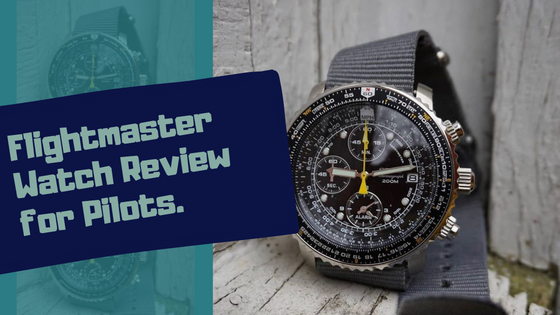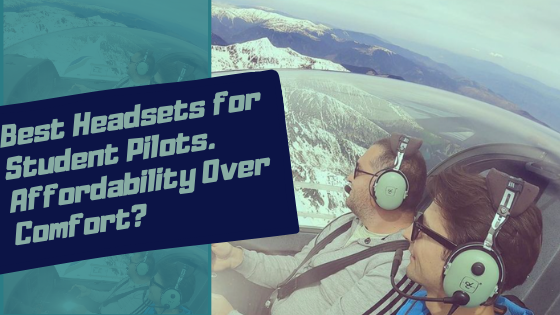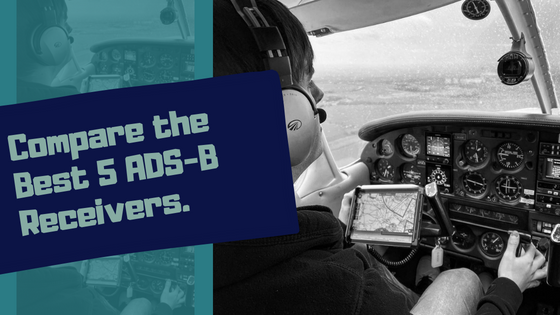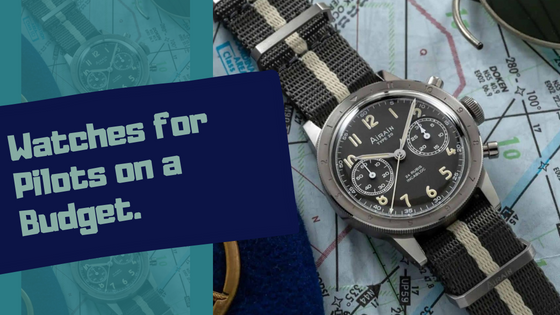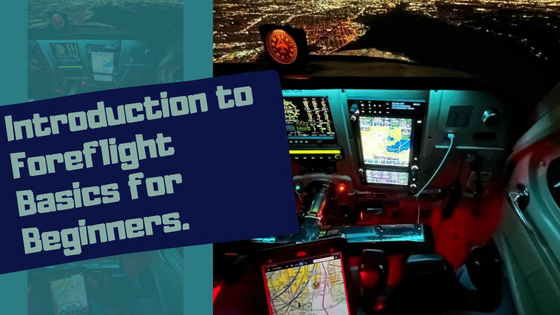Best In-ear Aviation Headsets for Comfort & Convenience.
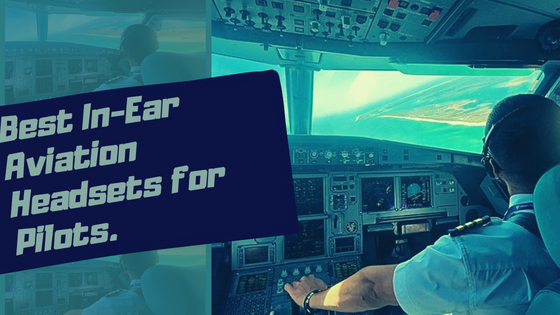
Okay, let’s be honest. Headsets comprise a large proportion of the bulk and weight that pilots carry around with them. Having a hi-tech headset is excellent and everything, but lugging it around can get tiresome after a while.
Due to their weight-saving advantage, many pilots are switching to in-ear headsets and not looking back. They are preferred particularly by experienced pilots operating in the pressurized cockpits of airliners with low ambient noise levels. Pilots in this category are also more likely to fly long hours and want something to wear comfortably on the head for long stretches. Many in-ear headsets are also compatible with custom earpieces that pilots can have molded to fit their ears, thereby earning in-ear headsets extra points for noise reduction and comfort.
Another benefit of in-ear headset designs is that they are more accommodating of sunglasses and hats, allowing pilots ease of use on top of them. This will enable aviators to rock their unique style while on the job.
Aviators can fold in-ear headsets to a fraction of their original size and stuff them into a handbag or a side pocket.
Despite applying the same general design philosophy, in-ear headsets come in various assortments catering to different feature requirements, comfort levels, budgets, and style standards. There is an in-ear headset out there for every pilot, including yourself.
To help you make sense of the jumble of products in the market, we have provided you with our countdown of the five best in-ear headsets available today.
While compiling this list, I considered the overall appeal of each product in terms of features, comfort, and price.
Similarly, I thought about what pilots had to say about each product in their ratings and reviews, as nothing can replace experience in the field.
Before we continue, we must also mention that the main drawback of in-ear models is that – despite being very good at noise reduction – they do not offer quite the same level of noise reduction achievable through traditional over-the-ear and on-the-ear headsets. This means they are generally unsuitable for pilots flying piston engine aircraft or those flying in noisy cockpits.
All of these headsets are good, more or less. Are some better than others? Definitely Yes.
However, which headset is best depends on your specific requirements and how much you are looking to pay. Having cleared this last caveat without further ado, let’s get right into our countdown!
Number 5: Clarity Aloft Pro Plus.
Cost: ~ 725 USD
The runner-up position in our countdown goes to the Clarity Aloft Pro Plus. The Clarity Aloft was well received after its first introduction into the market. The Pro Plus model has made things even better by retaining the original set’s excellent performance while making it lighter and thus more comfortable to wear.
This set is PNR only, but lately, many aviators have said that this in-ear headset is “as good as ANR.” Thus, this set can live up to that standard. Testimonies from pilots after using this headset in loud cockpits, such as of Boeing 737, have praised its excellent noise-reducing performance.
This is partly due to the set’s patented foam earplugs, which are excellent at sealing off the ear canal.
Weighing in at less than 2 oz (60 grams), this is also one of the lightest headsets on the market, which is excellent. However, unlike many super-light headsets, pilots wearing the Clarity Aloft Pro Plus don’t have to worry much about the microphone slipping out of place as the microphone boom is very stable.
The headset also has a slim and light wire, making it easy to handle and move around inside the cockpit. However, remember that rubbing or contact on the headset wire will translate to noises in the earpiece.
The set is also TSO certified by the FAA, which gives customers additional assurance as to the robustness and quality of the set’s build. Thus, although pricey, the set’s light, but the robust design guarantees your money’s worth.
It isn’t easy to justify the price of this headset despite the high-quality build because there are alternatives in the market in this price tier that would usually come with ANR.
Number 4: Quiet Technologies Halo.
Cost: ~ 360
Although not the best headset on our list, the Quiet Technologies Halo is certainly one of the most innovative. Quiet Technologies is a new entrant into the headset market, and an audiologist runs the company. This means that the QT Halo has a unique design informed by what audiologists have learned about the human ear.
Perhaps the most distinguishing feature of the QT Halo is that, unlike other in-ear sets, the speakers are not housed inside the earpieces. Instead, the speakers are in the headband and connect to the earplugs via bendable acoustic tubes. This has the advantage of keeping the sensitive electronics in the speakers away from the ear to reduce contact with sweat. This design feature has the effect of extending the longevity of the product.
Another advantage the QT Halo offers is that several components, including the acoustic tubes and the earpieces, are replaceable. Adapting molded earpieces to the headset is possible, but the manufacturer does not recommend it.
The manufacturer claims the QT Halo in-ear headset can reduce noise compared to ANR-equipped headsets if appropriately fitted. Reviews indicate that while still very quiet, the manufacturer’s claims might be slightly exaggerated.
However, the QT Halo’s low price and excellent comfort over long flights make it extremely popular. This set offers a practical size and weight-reducing option at less than half the cost of flagship ANR products.
Number 3: UFQ L2
Cost: ~ 330 USD
What stands out most with this headset is that although it is not a premium product, it offers excellent value for money. Very few headsets in this tier come with ANR – and this is one of them. Reviewers have commented that when the headset fits correctly and the ANR is active, it can handle extremely noisy cockpits, including those of the piston engine Cessna 152 and 172. Some have even gone as far as to say that this is the best headset they have ever used.
What also stands out in this product is its modular design and customizability. Several components of the set can be tweaked and adjusted to suit user preferences – these include a variety of earpieces and connector options, among others.
Of course, the set ships out with a ‘free’ rechargeable Bluetooth adapter, but reviews indicate that its performance is less than satisfactory and requires replacement with something better.
Like all in-ear designs, this set is extremely light and thus comfortable to wear. The heaviest part of the apparatus is the battery module, but that is – of course – not worn on the head. The battery module loads two AA batteries.
Reviewers have also noted that the earpiece cables are thin and very light. Although this contributes to the lightweight of the set, it comes at the cost of that component being very delicate.
Overall this design is a favorite for many pilots and offers excellent value for money.
Number 2: In-Ear Faro Air
Cost: ~ 400 USD
This model represents Faro’s first and only in-ear set. The model is popular for its superior comfort, and it’s easy to understand why as it only weighs 1 oz (28 grams). Weighing 28 grams makes it one of the lightest aviation headsets in existence.
Despite lacking ANR, the In-Ear Faro’s sound reduction is admirable at up to 50 dB. This makes the set more versatile than other in-ear sets in the same category as pilots have reported wearing it in extremely noisy cockpits, such as helicopters. The model’s light weight makes it great for passengers in the cockpit, and some pilots reserve a unit for when their wives accompany them.
The product is a big win in terms of ear comfort as well. It comes with a set of replaceable slow-recovery composite foam earplugs that effectively seal the wearer’s ear while also releasing pressure from the ear canal. Users can also arrange custom-fitting earpieces specially molded for their ears, providing even more benefits for comfort and noise reduction.
Typically this product has a high rating from aviators, and its impressive noise reduction makes it more versatile than other in-ear sets.
However, one notable disadvantage of this product is that some pilots mention having to constantly re-adjust the microphone and headset.
Although not the cheapest in-ear headset in the market, the In-Ear Faro is still priced competitively.
Number 1: Bose ProFlight Series 2
Cost: ~ 1000 USD
The crème de la crème – but at a price. The Bose ProFlight Series 2 is probably one of the best aviation headsets on the market. Period.
The key to this product is that it comes with the signature Bose ANR technology. Bose was the first company to offer ANR products and is undoubtedly the market leader in ANR technology. Thus with this headset, you get everything – superior comfort and weight saving without having to make a sacrifice in terms of noise reduction capabilities.
The Series 2 is the successor to Bose’s Series 1 model, which caused shock waves in the headset market when it was first introduced. The Series 2 has managed to improve on an already excellent design.
In particular significant savings on weight is made, and the headset’s cord has also been made lighter and thinner.
Although this may sound trivial, a lighter and thinner cord means that it will be less likely to tug on the wearer’s head as it moves.
Weight-saving measures have brought down the weight of the set to around 4.5 oz (110 grams), which is impressive for a device featuring ANR.
The Bose ProFlight Series 2 has three selectable levels of ANR: high – medium – low. This allows the wearer to adjust the ANR feature per the noise level in the cockpit, thereby adding to the model’s versatility.
The Series 2 also improves its predecessor’s Bluetooth functionality and the Talk-Through control feature. This feature lets the wearer turn off the ANR process on an earbud by simply tapping it. This is useful when the pilot wishes to hear ambient noise or a person talking to him. The pilot re-engages the ANR by merely giving the earbud another tap.
Bose is famous for quality build and long-lasting products, and the 5-year warranty with the Series 2 is a testament to this tradition. Moreover, the model is also TSO certified.
Although the “high” ANR setting on the console is for handling a noisy cockpit, the Series 2 is still better for jet cockpits, and pilots flying piston engine aircraft would be better off with the over-the-ear design of the Bose A20.
Perhaps the only drawback to the Series 2 is its price. It is more expensive than the A20. However, the hefty price is somewhat justifiable because it offers similar features at a much lower weight.
And that about rounds up our countdown.
In-ear headsets certainly offer many advantages in terms of comfiness and style, but usually at the cost of noise reduction and durability. Having established this fact, please understand that there is a sufficiently wide range of products in the market to find the best in-ear headset for your needs.
Image Source: @pilot_matteo via Instagram.

